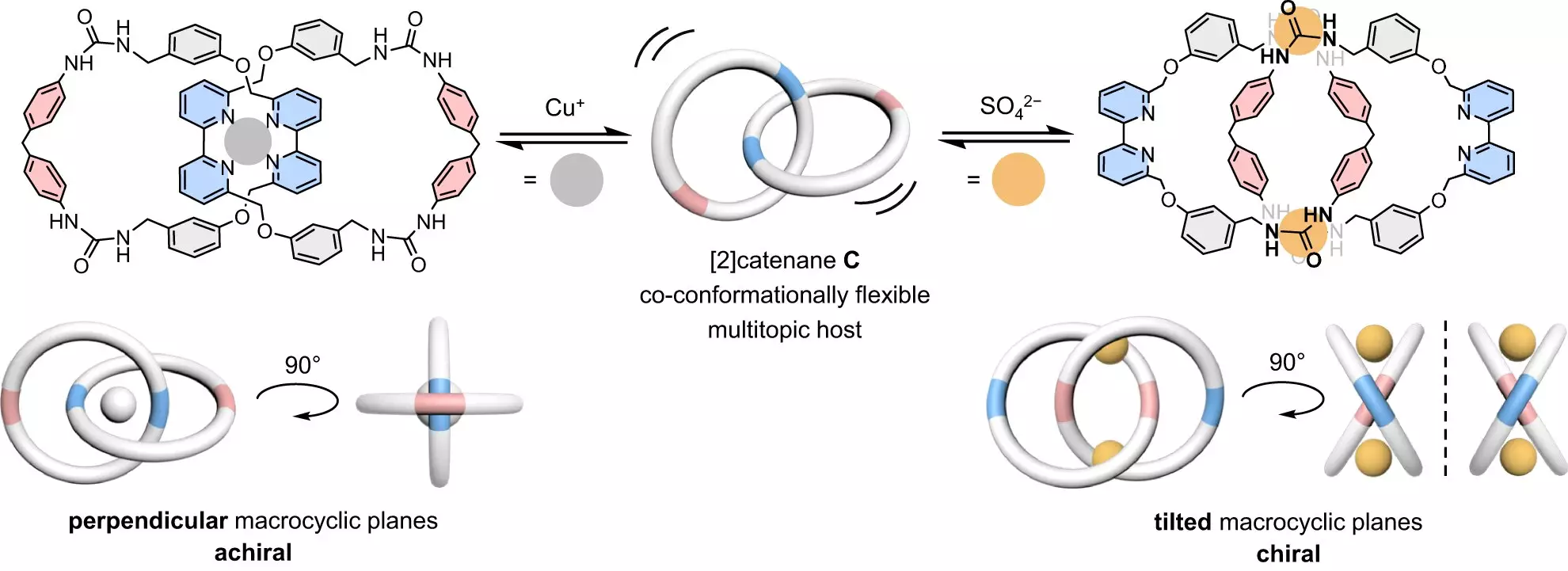In a realm often dominated by the predictable patterns of molecular structures, catenanes elegantly break the mold. These fascinating compounds, resembling everyday objects such as metal chains and handcuffs, serve as embodiments of unique mechanical synergy. By interlocking multiple rigid rings into flexible configurations, they exhibit remarkable strength and versatility. This fundamental property not only enables their practical applications in threading together physical constructs but also inspires chemists to explore their potential in molecular engineering. The recent breakthroughs in catenane synthesis are not mere academic exercises; they present a robust platform for the creation of molecular switches, sensors, and machines that could redefine technological boundaries.
Success in Synthesis: A Leap Forward
Led by the insightful Professor Ho Yu Au-Yeung at The University of Hong Kong, recent research has demonstrated the synthesis of a novel catenane featuring two free-moving rigid macrocycles. This advancement stands out due to its ability to selectively bind with both cationic copper(I) and anionic sulfate ions, two crucial elements for life and various industrial processes. Traditionally, the challenge in crafting such dual-interaction catenanes stems from the inherent repulsion between similar charges. Most designs have struggled to provide a unified binding site effective for both positively and negatively charged ions. However, Au-Yeung’s team has ingeniously approached this hurdle by engineering distinct binding sites on each ring of the catenane, allowing for a dynamic structural response that adapts to the specific geometry and charge of the target ion.
The Chameleonic Nature of Catenanes
What makes this catenane particularly striking is its capability to mimic behavioral traits observed in nature, such as the color-changing abilities of chameleons. By facilitating the rotational motion of its rings, the catenane can conform itself to the ionic shapes of the copper(I) cation or the sulfate anion. This adaptability symbolizes a significant leap in the design of molecular hosts capable of recognizing and interacting with different particles, a functionality that could pave the way for highly selective sensors. For example, integrating such sophisticated molecular receptors into systems for environmental monitoring could revolutionize how we detect pollutants and hazardous materials.
Applications Beyond the Laboratory
The implications of this research extend well beyond theoretical chemistry. Both copper(I) and sulfate ions are pivotal for biological functions, including cell growth and metabolic processes. The ability of the catenane to selectively bind these ions suggests potential applications in bioremediation and nutrient recycling. Imagine using catenanes to extract excess copper ions from industrial waste or recovering sulfate for agricultural use—this opens doors to sustainable practices previously thought impractical.
Moreover, as healthcare advances increasingly rely on detailed biochemical analysis, the demand for reliable diagnostic tools is ever-growing. Leveraging catenanes for precise ion detection could lead to innovative diagnostic devices that monitor critical minerals in human biological fluids, much like existing tests for sodium or potassium levels. This transformative approach could enhance not only healthcare but also environmental stewardship.
The Future of Catenane Research
Looking forward, Professor Au-Yeung and his team are poised to push the boundaries of catenane technology even further. Their ambition involves developing more intricate catenane structures capable of simultaneously binding multiple ions and ion pairs. This could transform the landscape of molecular receptors, enabling complex interactions and layered functionalities unheard of in conventional chemistry.
Such advancements carry the potential to lead us into a new era of molecular design, where chemistry merges seamlessly with technology to provide solutions that enhance our everyday lives. As research expands, the role of chemistry in solving real-world problems becomes increasingly evident, turning once-abstract concepts into tangible advancements that drive progress in scientific and environmental fields.
The enthusiasm surrounding catenane research epitomizes the ongoing journey in molecular science, where every discovery leads us closer to realizing the extraordinary capabilities of designed molecules. The promise of catenane chemistry is more than just fascinating; it is a testament to the innovative spirit of modern chemistry, reminding us that the most complex solutions often lie in the simplest interconnections.


Leave a Reply